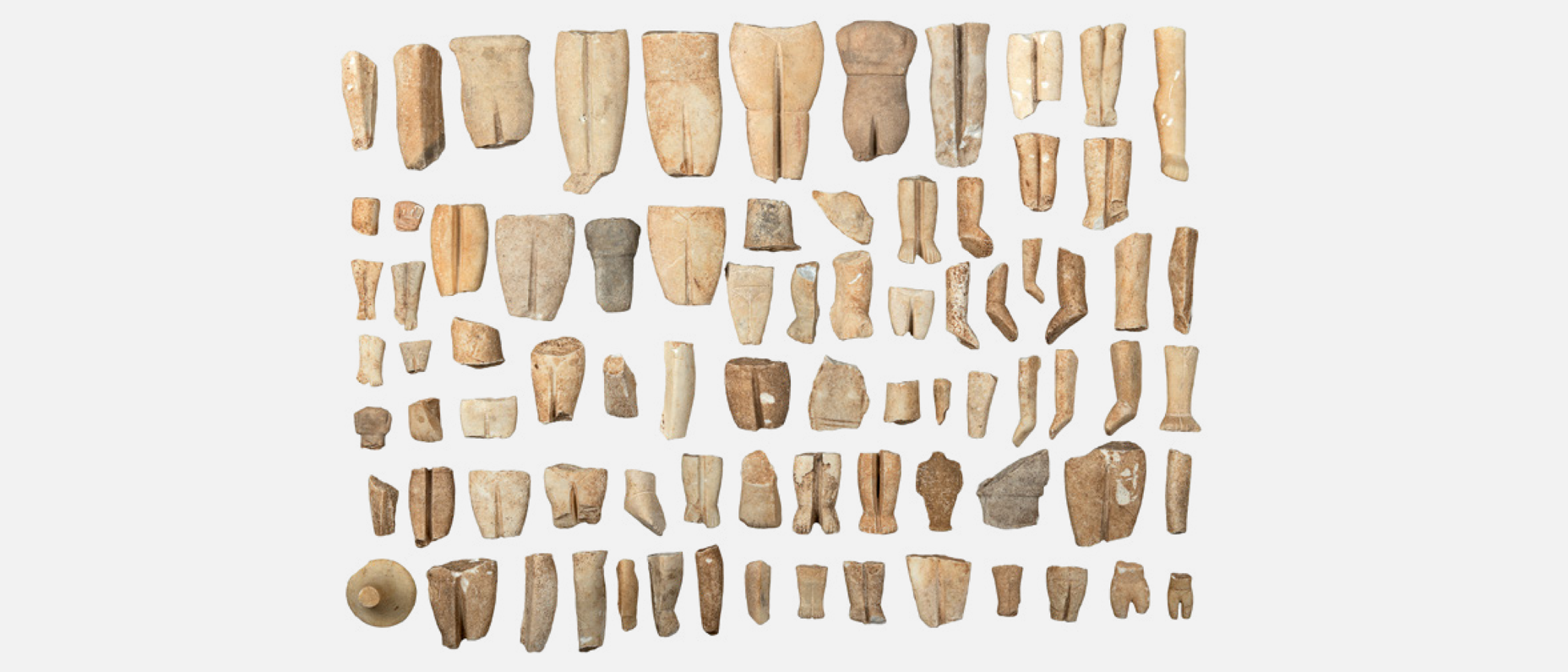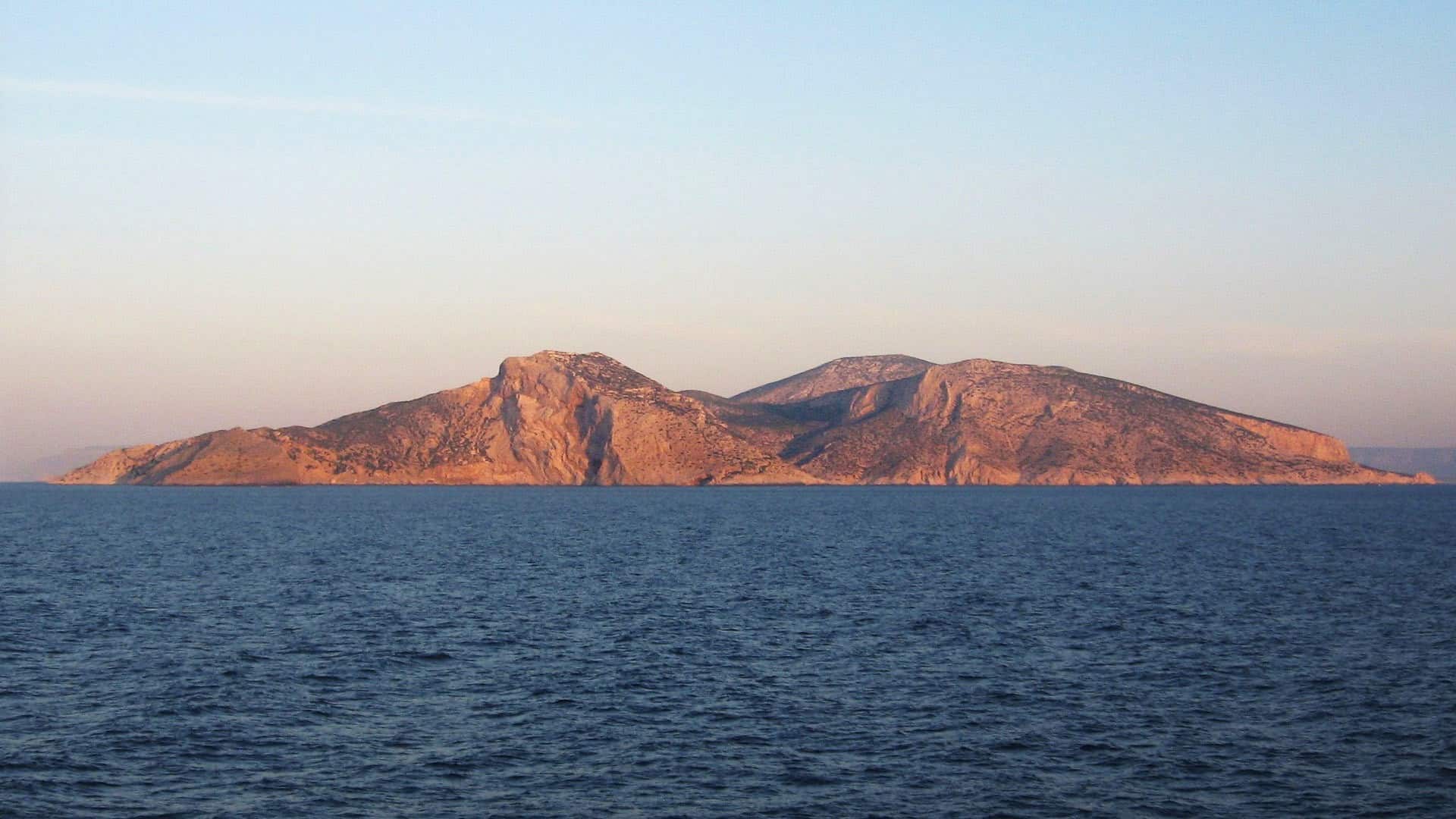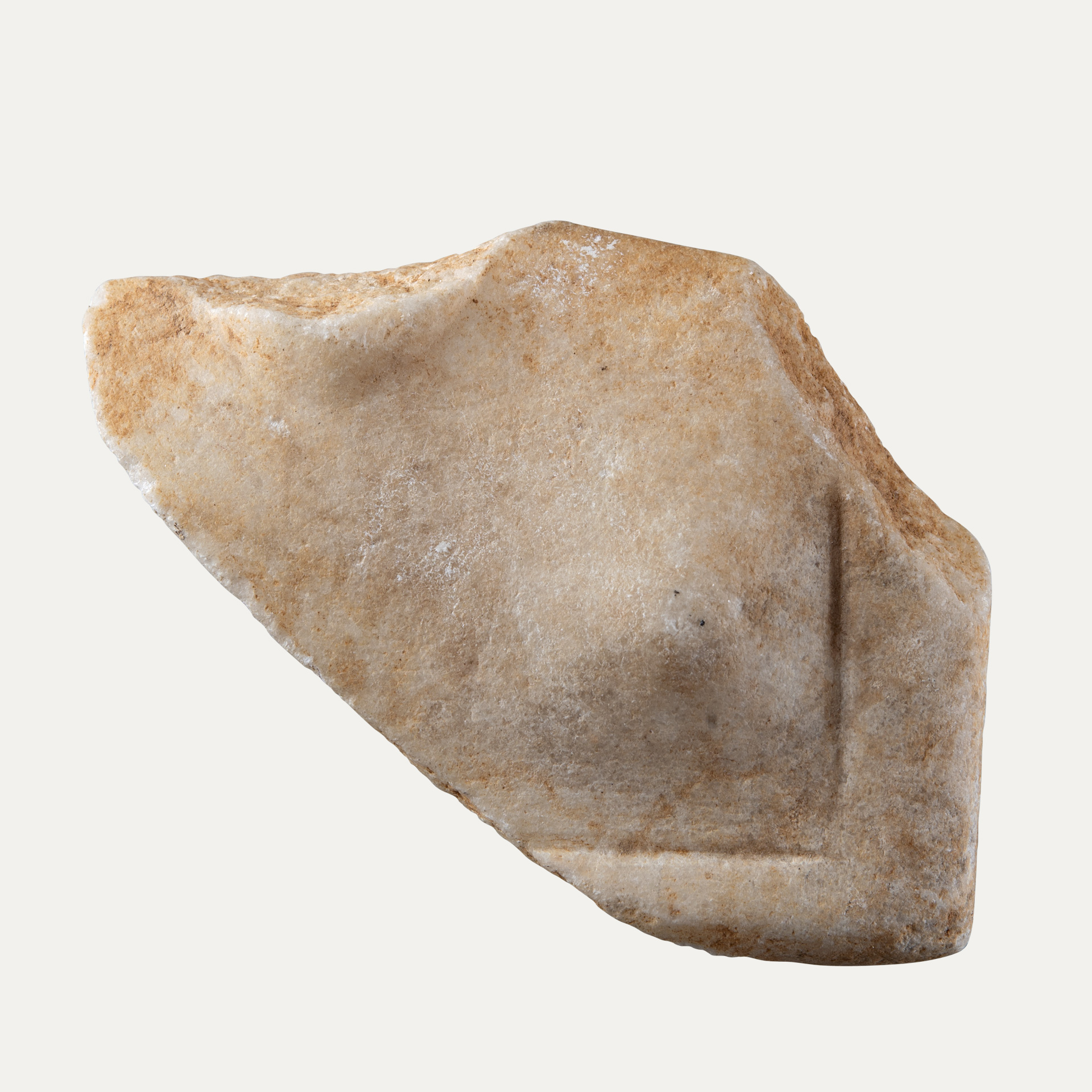“Keros Hoard”
CYCLADIC ART

The “Hoard” is said to have included at least 350 fragments of figurines of the “canonical” type (torsos, lower legs, feet, thighs, or necks), a small number of marble and clay vases, obsidian blades, and other minor objects of the Early Cycladic II period (2700 – 2400/2300 BC).
These objects were smuggled out of Greece in the 1950s and 1960s and were distributed into various museums and private collections. Unfortunately, the fate of many of these artifacts is currently unknown. A considerable number–81 fragments–have been returned to Greece and are now exhibited in the Museum of Cycladic Art. Most of these pieces were acquired in 1990 and 1992 from auctions held in London, and some of them were reclaimed thanks to sponsorship from the Commercial Bank of Greece.
AN OPEN AIR PAN-CYCLADIC SANCTUARY

The Kavos site on Keros is an interesting case in the study of archaeology. Several scholars have conducted investigations at the Kavos site on Keros from as early as 1963. In the early stages of research, the enormous concentration of fragmented figurines and vases in the looted area was explained by attributing a religious character to the site. It became evident that this was a special place, where the Early Bronze Age islanders intentionally deposited fragmented objects, as the majority of the fragments show evidence of age and use.
From 1987 onwards, the University of Cambridge, in collaboration with the Ephorate of the Antiquities in the Cyclades, has carried out systematic excavations in the area. This work revealed a second, undisturbed deposit – the “Special Deposit South”– which was filled with fragments from the large settlement on the neighboring islet of Dhaskalio. This deposit was directly opposite the other two deposits, and the evidence of intense metallurgical activity, as well as other features, indicated that it was more than a residential settlement. This has led scholars to conclude that Kavos functioned as a large pan-Cycladic sanctuary, and that Keros and Dhaskalio were the centre of a large network of activity that was conducted between the two islands.
The systematic study and publication of the assemblage was carried out by Peggy Sotirakopoulou in 2005, in her monograph “The Keros Hoard, Myth or Reality? Searching for the lost pieces of a puzzle.” Sotirakopoulou took the research one step further, as she compared the artifacts from the official excavations at Kavos (which are kept at the Museum of Naxos) with the collection of fragmented figurines housed in the Museum of Cycladic Art.
She confirmed their common origin, not only on the basis of their similarities, but primarily because she found fragments between the two groups that could be joined, which proved beyond all doubt that the material deposits were part of a single whole.
